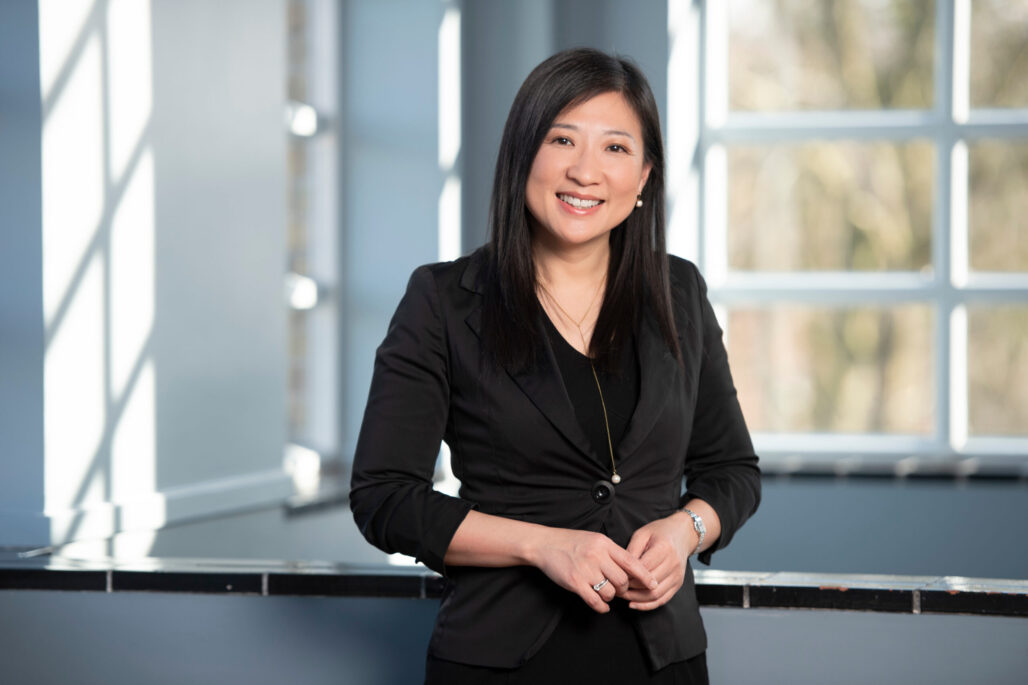“Sooner or later, every industrial company will make the transition to a sustainable, circular model. Some will do it because of regulations. Others to stand out in the market. But more and more entrepreneurs truly want to invest in the future because they believe in a sustainable world. Perhaps ultimately, this sense of urgency is the biggest driver of the energy transition.” Meet Carol Xiao. This is her vision on the transition.
“As a chemical technologist, I was trained to make industrial processes more efficient. How do you get from input to output as quickly and easily as possible? Thanks to my Black Belt in Lean Six Sigma, efficiency has become my way of thinking. However, all to often, this is a linear way of thinking: we focus on how to get from A to B. Only in recent years, an important new perspective has been added: circularity.”
Thinking circular
Thinking circular has become an important addition for the energy transition. Take hydrogen. By itself, this is just a molecule. But hydrogen only becomes a solution if you look at it more broadly, circularly. How can we produce hydrogen in such a way that it does not release CO2? And how can we use this green hydrogen to replace industrial processes that are currently based on fossil raw materials?
Reduce, reuse and recycle
Those answers are found when we start thinking out-of-the-box. This helps us to develop entirely new solutions. Let’s create a focus on the three r’s: reduce, reuse and recycle. And implement this, not only by looking at our own industry, but also focus on the sustainability of our entire planet. The climate will not benefit if we make the Netherlands and Europe more sustainable and move polluting industries elsewhere. It is the “waterbed effect”: a metaphor that is more than symbolic with rising sea levels.
What do other ISPTers think of the transition?
“Behavioral change requires a reliable outlook for the future” – John Harinck
Circularity as a business-model
The great thing is, I am not telling you anything new. Because I notice that the circular, sustainable idea is starting to manifestate among more and more industry professionals. Of course, regulations work too. It’s a way to get companies to reduce CO2, for example. And fortunately there are also companies that are starting to see sustainability and circularity as a business model to distinguish themselves. But I also see a growing group of professionals, young and old, who are intrinsically guided by their belief in a sustainable world. They make choices based on a sense of urgency, and we should not underestimate the importance of that. After all, 80 percent of our decisions are made based on our feelings. Even if – often in hindsight – we say we don’t.
Tighter direction is needed in innovation policy
It is up to the government to channel everyone’s sense of urgency. For example, by taking a firmer lead in innovation policy and making it clear which direction we are taking with hydrogen. Because if the direction remains unclear, investments in innovations become a search in the dark. Not only produces this a certain feeling of fear, but it is also a bad advisor. We need certainty. Not only on a governance level, but also the industry should communicate what it needs. This requires closer cooperation and consultation, between industry and government, within chains and beyond, and between sectors. Consider the offshore production of green hydrogen that must be synchronized with the onshore demand for it.
ISPT as an open innovation platform
This collaborative process is central at ISPT. And that is what makes the work at ISPT so meaningful to me: bringing different parties together, identifying bottlenecks and bringing concrete projects into scope. For example, one of our projects resulted in the design of a gigawatt hydrogen project that investors can start using right away. I am enormously proud of that! It stills even more confidence and belief in a sustainable world. All that remains for us to do is to take action and get on with it.
More about Carol Xiao
Carol Xiao is our Director Business Development. She has a background in Chemical Engineering and dedicates her efforts towards creating a future society that runs on green hydrogen, instead of fossil fuels.

